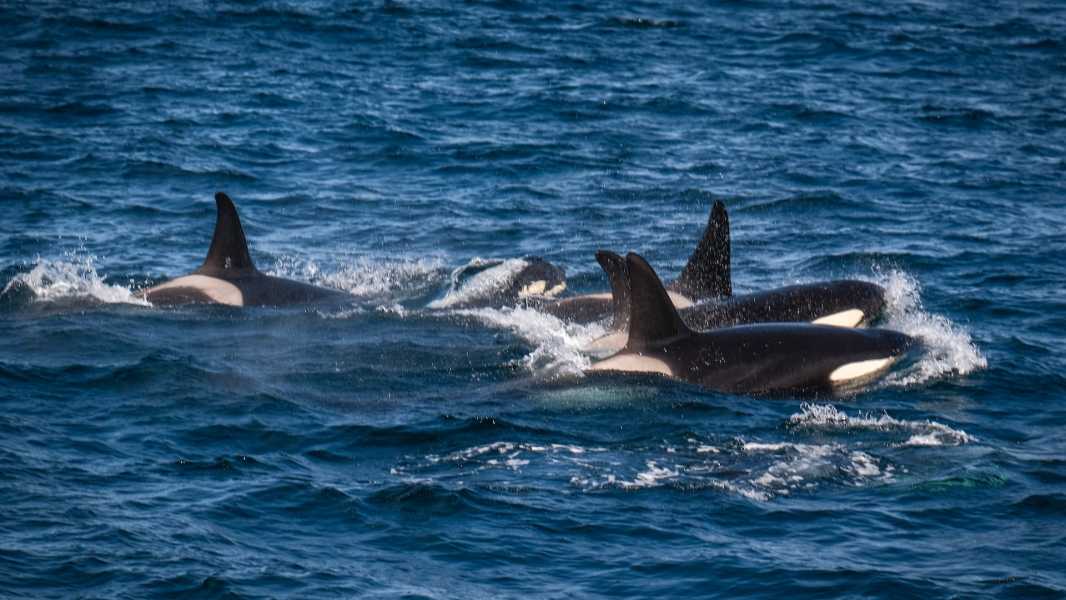
(Image credit: Finn Bjurwall Hansen via Getty Images)
A group of more than 60 killer whales viciously attacked and killed an 18-metre (60-foot) pygmy blue whale, shocking participants on a nearby whale watching excursion, according to new footage.
The dramatic incident occurred in Bremer Canyon, a marine park off the coast of Bremer Bay in Western Australia, on Monday, April 7.
Footage posted to Instagram by Naturaliste Charters shows a large group of killer whales (Orcinus orca) cooperatively hunting and circling an endangered pygmy blue whale (Balaenoptera musculus brevicauda). The whale is eventually seen dead on the ocean surface, bleeding from its mouth, while the orcas feast on their kill.
“Yesterday we witnessed an amazing and rare event where several pods of orcas successfully hunted a blue whale in Bremer Canyon,” reads the caption of a Facebook post by Naturaliste Charters sharing photos of the unique incident. “This intense event lasted less than 40 minutes from the time we first spotted blue on the surface until the battle was over.”
Posted by naturalistecharterswhalewatching on
The officials added that when the blue whale's fate was sealed, the orcas “celebrated by jumping out of the water and slapping their tails.”
Naturaliste Charters said the incident was one of the few reported to involve orcas attacking blue whales.
Killer whales are known for their high levels of intelligence and hunt in coordinated groups, often using complex communication and teamwork to catch prey much larger than themselves. They are known for their brutal tactics; they have previously been observed creating large waves to knock seals off floating ice, working together to separate whale calves from their mothers and drown them, and ripping out the livers of sharks.
“We're still in shock,” marine biologist Jenna Tucker, who works for Naturaliste Charters and witnessed the recent incident, told ABC. “It all happened pretty fast for such a large creature.”
The whale was seen with multiple bite marks and at one point was attacked by up to 30 orcas at once.
“We estimated that there were about 60 orcas involved, possibly more,” Tucker said. “We confirmed five different family groups involved. Quite often, many of them move on when it’s over. But in this case, we saw 20 to 30 animals all converging on the whale at the same time to finish it off.”
Tucker also added that among the predators were several young killer whales, including one that was just a month old.
“They're involved from an early age – this calf doesn't have any teeth yet, but it's close to its mother,” Tucker said.
Pygmy blue whales are a subspecies of the blue whale, the largest animal on the planet. Regular blue whales can reach lengths of 110 feet (34 m), while pygmy blue whales grow to about 79 feet (24 m). Although they are smaller than their larger relatives, pygmy blue whales are still longer than many other whale species, including humpback whales and sperm whales. Killer whales rarely exceed 32 feet (10 m) in length.
Pygmy blue whales are found primarily in the Indian Ocean and the southwest Pacific Ocean, generally preferring warmer tropical and temperate waters. They are one of five subspecies of blue whales that have been identified so far. Blue whales in general are listed as Near Threatened by the International Union for Conservation of Nature (IUCN), while pygmy blue whales are listed as Data Deficient and are also categorised as Threatened under Australia's Environment Protection and Biodiversity Conservation Act (EPBC).
Sourse: www.livescience.com





